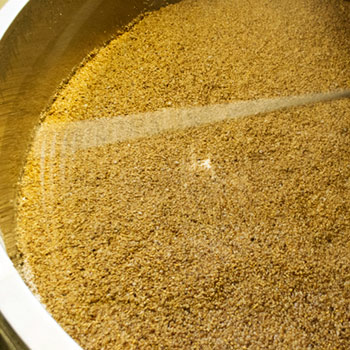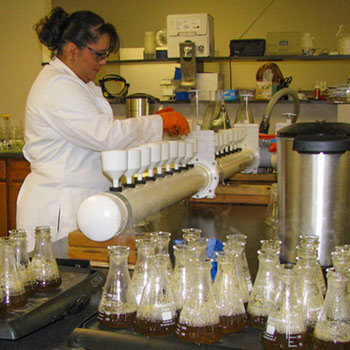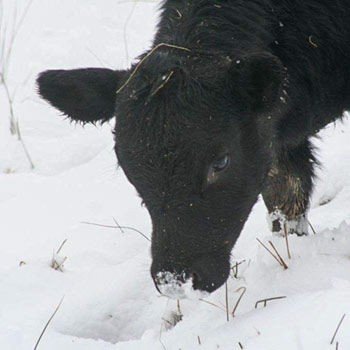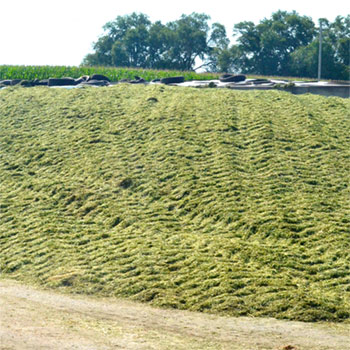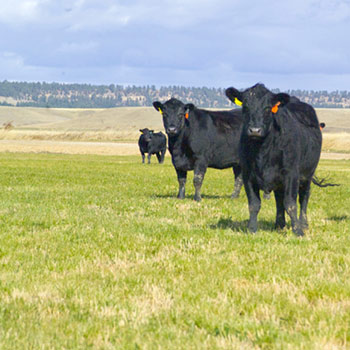
Different Way to Select for Foot Structure
Phenotypic and genotypic tools available for structural selection.
Building good cattle starts from the ground up. Sound feet and legs are essential. Cattlemen know that, but what can they do about it? They can learn about tools that help in selecting cattle with sound feet and legs.
 |
Angus claw set and foot angle scores are scored from 1 to 9, with 5 being ideal. Scores 5-9 are used to establish EPDs, explained AGI’s Kelli Retallick. If the foot angle and claw set EPDs are lower than 0.5, that is improving the breed. [Photos by Eric Mull] |
As is true with most genetic selection, there are two sides to the coin — phenotype and genotype. Jake Pickering, American Angus Association regional manager for Arizona, California and Nevada, walked through some phenotypic criteria to look for in a foot-scoring session as part of Angus University at the 2019 National Angus Convention and Trade Show in Reno, Nev.
He highlighted “cowboy structure,” meaning the back feet track to the front feet’s footprints while walking, and the animal’s back stays level when on the move.
Foot shape rightly gets attention; but there’s more to bad feet, he cautioned. “Foot shape is the effect. The cause is structure.”
To genetically select for better feet and legs, Angus Genetics Inc. (AGI®) Director of Genetic Service Kelli Retallick explained the thought processes behind the American Angus Association®’s expected progeny differences (EPDs) for foot angle and claw set.
Collecting feet and leg scores is a relatively new endeavor, but one that has garnered about 50,000 combined data sets, she said. In the summer of 2018, interns collected scores on 4,500 head, ensuring clean and consistent data.
For best foot angle and claw set scores, she advised scoring before trimming hooves, when animals are at least 320 days old or older (which is the first day in yearling data collection), and older females repeatedly. While older is better, she said large groups of 18-month-old or 2-year-old bulls can also be submitted before sale, if available.
Be sure to score the worst foot of any animal on a hard surface where both claw set and foot angle can be readily seen, she advised.
Foot scores are tied to yearling contemporary groups, said Retallick. Only animals in a contemporary group of two or more animals of the same sex provide variation for a genetic evaluation.
“If there is no variation (all animals in the group score a 5, for example), then those scores can’t be used in the evaluation,” she said.
She added that if scores can’t be compared against others, then they aren’t useful. For instance, scoring older cows is great, but if you have just one 10-year-old cow to score, then her data can’t be compared within her contemporary group. However, repeated measures are used. So, older females can still be scored, even if their contemporary groups are smaller. They just need a contemporary group. It’s also good to score before culling animals.
Foot angle and claw set are scored on a scale of 1 to 9, with 5 being ideal. Although all scores are recorded in the database, only scores falling into the 5 through 9 categories are used in the genetic evaluation, so lower EPD numbers are more desirable. If the EPD is lower than 0.5, that is improving the breed, she said.
EPDs are used to compare potential parents, so she offered help in reading and comparing the EPDs. Comparing both claw set and foot angle, Sire A’s EPDs are 0.79 and 0.80, respectively. Sire B’s EPDs are 0.29 and 0.30. On average, Sire B’s progeny should score half a score better (lower) than Sire A’s progeny.
“Foot scores are genomically enhanced,” she added, meaning DNA profiles on an animal and related animals in the database contribute to the EPD values.
She added that foot scores are continually added to the database. Foot score EPDs are included in the maternal weaned calf value selection index ($M).
For more information on foot scores, contact the staff at AGI at 816-383-5100. Read more research on foot scoring in “Staying Sound” in the January Angus Beef Bulletin.

